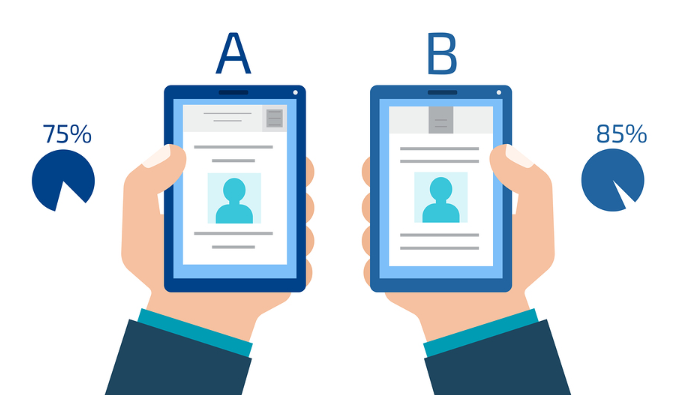Why You Should A/B Test When Running Digital Ads
No matter the platform or the ad, you should be A/B testing your digital ads to see what objective works the best.
If you’re new to the concept of A/B testing, let me introduce you to it – it’s kind of how it sounds. You test variable A, you test variable B, and from there you can pick which basket you should put your eggs in.
Analogies aside, if you’re unsure about a marketing decision (in this case, what direction or objective you should go with your digital ad performance), you should start by A/B testing both strategies.
Still on the fence? Let’s dive into this post to see why you should start A/B testing.
The Benefits of A/B Testing in Digital Ads
If you want to know how to optimize your performance (and budgets) most efficiently, you can A/B test two different variables. From there, you can analyze the performance, and make a more forward-thinking decision than before. This can reduce the time it would take you to try out two completely different strategies, and inevitably end up switching what you originally came up with.
Let’s go over all of the benefits of A/B testing, and why it’s worth giving it a chance when launching your next campaign.
Optimizes Your Ad Performance
Why try one thing when you can try both at the same time?
By testing both strategies simultaneously, you can decide faster than if you were to try both separately. You can also save money by spending only a little bit of time on the wrong objective or strategy.

Helps You Make Data-Driven Decisions
When you test both strategies, you might find new information you didn’t know before. One strategy might work for one specific metric, and another strategy might boost a completely different metric.
Try it on Your Meta Ads

If you want to try it in Meta, simply click “A/B test” and it will walk you through the process.
You can also try manually setting up two separate campaigns, ads, or ad sets with different objectives and running them both that way.
Try It On Your Google Ads
Unfortunately, Google doesn’t make it as easy as Meta does by having an A/B Test button to press. But you can still do this manually by creating two campaigns and setting different objectives using the same budget and sample size.
Maximizes Your ROAS
Ahh yes, it maximizes your return on ad spend (otherwise known as ROI, return on investment.) Who doesn’t want to get the most bang for their buck?!
By splitting your budget down the middle and trying both strategies out during the learning phase of your ads, you can easily see which strategy will prove to be more successful. Once you pick your top performer, you can feel good about the fact that you didn’t spend weeks putting all of your budget towards the wrong strategy.
Improves Your Targeting
You can lock your process down better by trying two different things at once. You can know who to target, and how in a fraction of the time it would take you to try both strategies out separately.
Sure, it can be hard for us humans to multitask at times, but feel free to throw that at Google or Meta, I promise they can handle it.
Reduces Risk
Risk-taking and thrill-seeking doesn’t quite apply when running digital ads. You want to hit the nail on the head as fast as possible to start seeing converting results.
To avoid risks, I’d suggest A/B testing. It’s almost like that’s what this blog post is about!
Noteworthy Mentions
Before you begin, there are a few things worth taking note of that you need to make sure you implement if you want to A/B test.
-
Keep Time in Mind
As soon as you get the results you need to pick A instead of B (or vice versa), you should not let time run on any longer. Spending too much time testing both options can harm your monthly budget and ad spend.
-
Set Clear Goals
Before you start, you’ll want to highlight what the goal is and what success looks like to you. Do you want to maintain a strong click-through rate, or are leads more important? Well, maybe that’s why you’re testing both options in the first place.
But either way, it’s good to test and see how both options play out.
-
Make Sure Your Sample Size Is Even
If A gets a wider audience than B, your metrics could be skewed when comparing both of them. You might think that A had better results, but in reality, it just had a wider audience than B.
Make sure you keep your audience the same so they both get an equal chance to perform.
Now you should have all the tools to run A/B testing on your digital ads, you can optimize your performance, and boost your metrics to increase your ROI and sales. Better yet, reach out to our team of strategists to do the A/B digital ad testing for you!
Thanks for tuning in, and follow along on our socials for further updates & blogs!
Ready To Grow?
Let's Talk!


